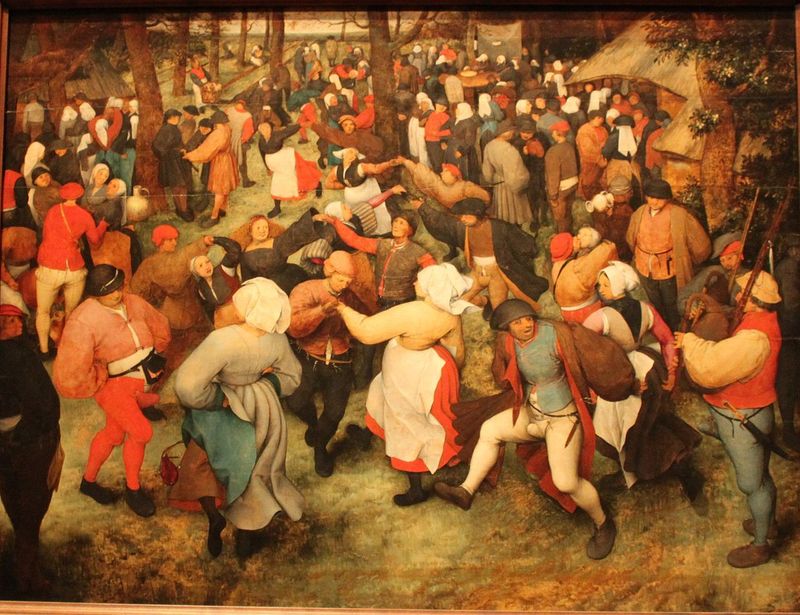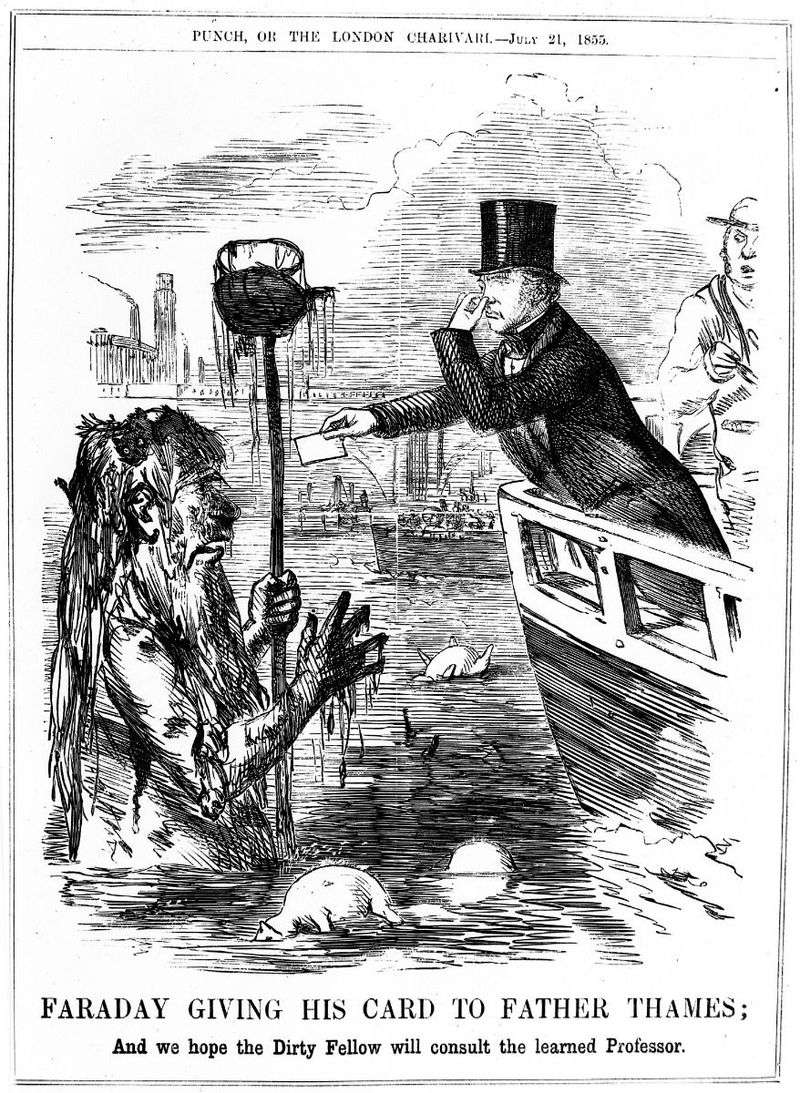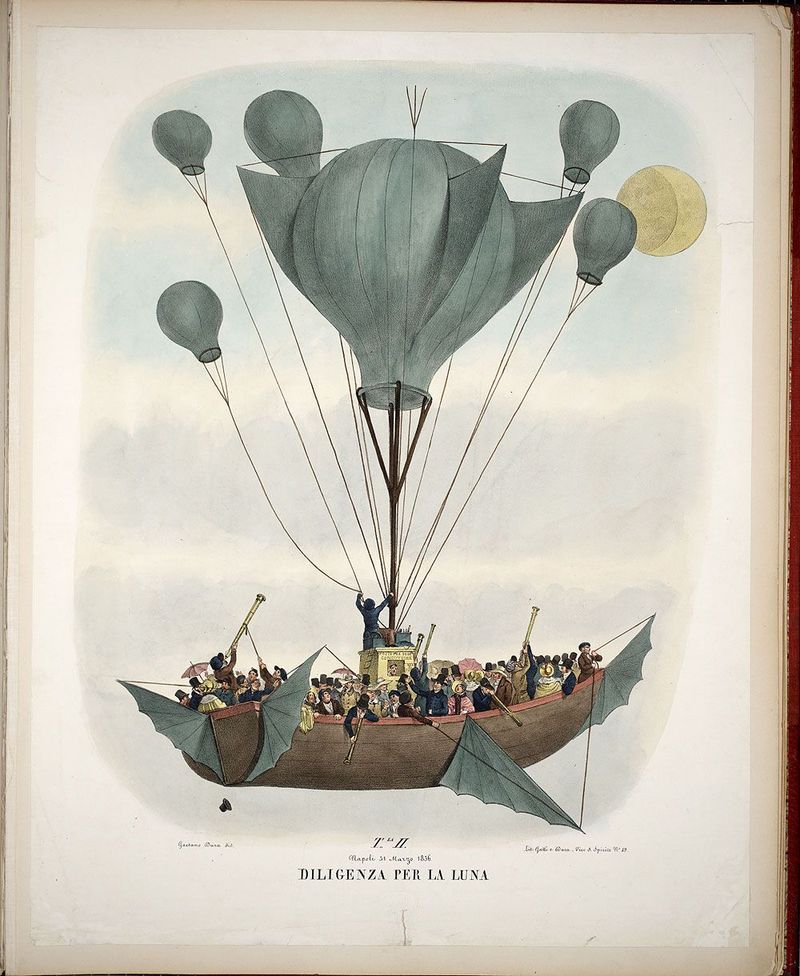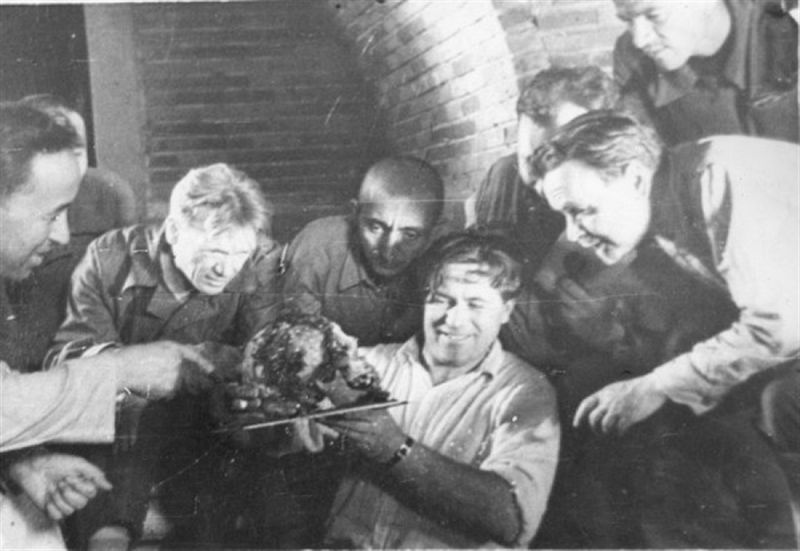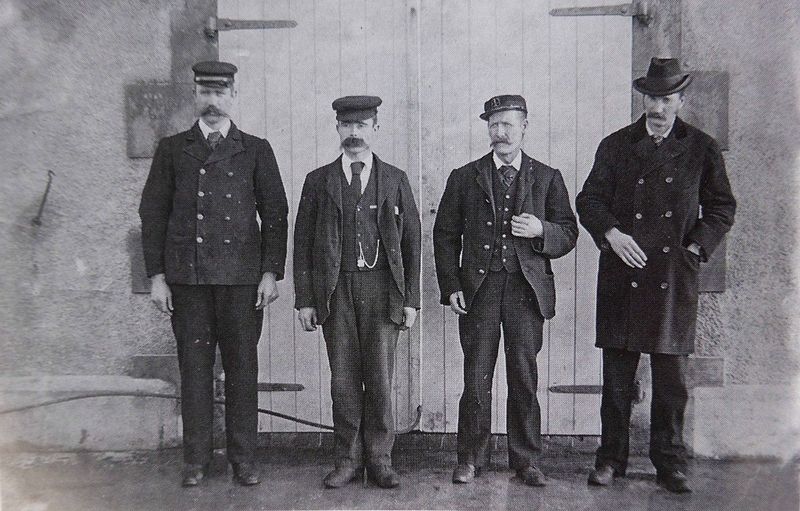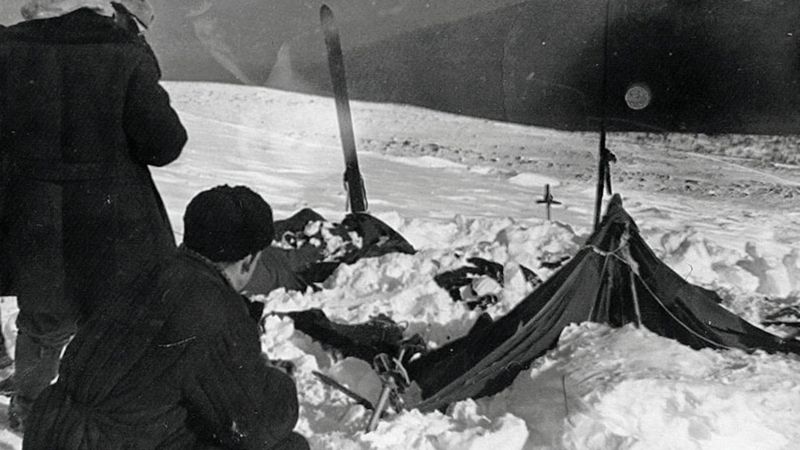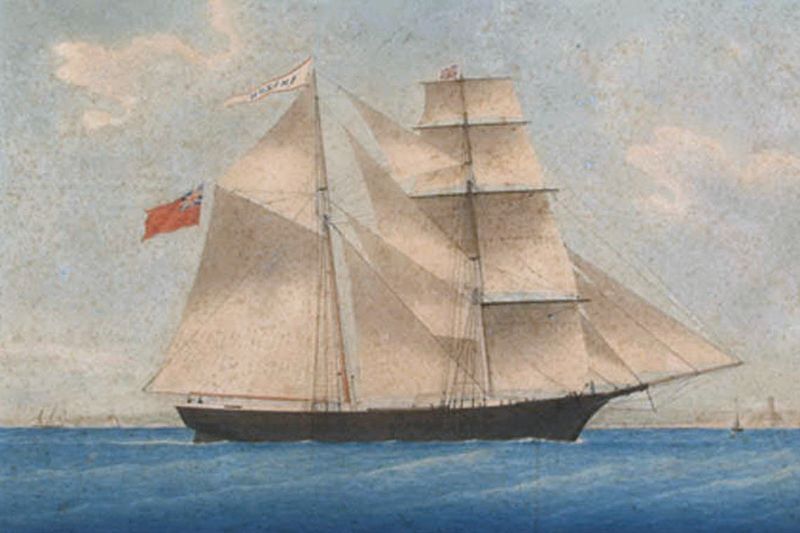History is filled with strange and intriguing events that often get overshadowed by more famous incidents. This collection uncovers 30 bizarre historical events that were hidden and forgotten over time. Each story reveals a unique and fascinating piece of the past that you won’t find in standard history books.
The Dancing Plague of 1518
In 1518, the residents of Strasbourg were struck by a sudden and uncontrollable urge to dance. Starting with a single woman, the dancing mania quickly spread, engulfing the entire town.
As more people joined in, the dancing continued for days, leading to exhaustion and even death for some participants. Local authorities attempted to control the situation by hiring musicians, hoping organized music might cure the mania.
Despite the good intentions, the music only fueled the fervor, leaving historians puzzled about the cause of this bizarre phenomenon. Was it mass hysteria, a curse, or something else entirely?
The Great Emu War of 1932
In 1932, Australia faced an unexpected enemy: the emu. After World War I, ex-soldiers who had been given farmland struggled against these large, flightless birds that devoured crops.
The government declared war on the emus, deploying soldiers armed with machine guns to combat the avian threat. To their surprise, the emus proved to be persistent and elusive adversaries.
Despite the military effort, the emus triumphed, and the “war” ended in embarrassment for the troops. Today, the Great Emu War stands as a peculiar reminder of nature’s unpredictable power.
The Tulip Mania of 1637
Tulip Mania was a period in the Dutch Golden Age where tulip bulb prices soared to extraordinary heights. People traded their fortunes for rare and exotic tulips, driving the market into a speculative frenzy.
At its peak, a single tulip bulb could cost as much as a house. However, the bubble burst abruptly in February 1637, leaving many in financial ruin.
Historians see Tulip Mania as one of the first recorded speculative bubbles in history. It’s a cautionary tale about the dangers of speculative investments and the unpredictability of market dynamics.
The Pig War of 1859
The Pig War was a confrontation between the United States and Britain over the San Juan Islands, sparked by the shooting of a pig. It began when an American farmer found a British-owned pig rooting in his garden and shot it.
This trivial incident escalated into a full-blown territorial dispute, with both countries deploying troops to the island. Tensions rose as both sides refused to back down.
Fortunately, diplomacy prevailed, and the conflict was resolved without bloodshed. The Pig War remains a humorous example of how small incidents can lead to major geopolitical tensions.
The Cadaver Synod of 897
In one of history’s most bizarre trials, Pope Stephen VI put his predecessor, Pope Formosus, on trial posthumously. The Cadaver Synod saw Formosus’ corpse exhumed, dressed in papal robes, and placed on a throne.
Stephen VI accused the dead pope of perjury and violating church law. The macabre trial ended with Formosus being found guilty, his papal acts nullified, and his body thrown into the Tiber River.
This strange event illustrates the intense political and religious turmoil of the time, as well as the lengths to which rivals would go to discredit one another.
The London Beer Flood of 1814
In 1814, a bizarre industrial accident led to the flooding of a London neighborhood with over 323,000 gallons of beer. A vat at Meux and Company Brewery ruptured, causing a domino effect that destroyed other vats.
The resulting wave of beer swept through the streets, demolishing homes and killing eight people. The incident became known as the London Beer Flood.
This unusual disaster highlights the unforeseen dangers of industrialization and serves as a curious footnote in London’s rich history. It’s a reminder of how unpredictable life in the city could be.
The War of the Stray Dog in 1925
The War of the Stray Dog was an absurd conflict between Greece and Bulgaria, triggered by a stray dog’s wanderings across their border. In 1925, a Greek soldier chased his dog into Bulgaria and was shot by Bulgarian guards.
This incident escalated into a full-blown military confrontation, with Greece invading Bulgaria in retaliation. The League of Nations intervened, calling for a ceasefire and mediation.
The conflict ended with Greece withdrawing its troops and paying compensation. The War of the Stray Dog exemplifies how minor incidents can escalate into international disputes.
The Affair of the Diamond Necklace
The Affair of the Diamond Necklace was a scandal that rocked the French court in the late 18th century. It involved a plot to defraud the royal jeweler of a diamond necklace intended for Queen Marie Antoinette.
The scheme was orchestrated by a con artist who impersonated the queen’s confidante, leading to a series of deceptions involving high-ranking officials. When the plot unraveled, it tarnished the queen’s reputation.
This scandal fueled public disillusionment with the monarchy and contributed to the French Revolution. It’s a captivating tale of intrigue, deception, and the power of perception.
The Battle of Karansebes in 1788
In 1788, the Austrian army experienced a surreal event known as the Battle of Karansebes. While camping near the town of Karansebes, soldiers indulged in alcohol and paranoia.
Amidst the confusion, rumors of an Ottoman attack spread, leading to a chaotic friendly fire incident. Austrian troops mistook each other for enemy forces, resulting in self-inflicted casualties.
The debacle left the army vulnerable, and the Ottomans eventually seized the opportunity to attack. The Battle of Karansebes serves as a cautionary tale about the dangers of miscommunication and lack of discipline in military operations.
The Boston Molasses Disaster of 1919
In 1919, Boston experienced an unusual and tragic event known as the Boston Molasses Disaster. A massive storage tank containing over two million gallons of molasses burst, sending a sticky wave through the streets.
The molasses flood caused widespread destruction, killing 21 people and injuring 150. Buildings were torn from their foundations, and the cleanup took months.
This bizarre disaster highlights the potential dangers of industrial storage and the unexpected consequences of negligence. It’s a sticky reminder of how everyday substances can become deadly under the right circumstances.
The Curse of the Hope Diamond
The Hope Diamond is one of the most famous gems in the world, known for its striking beauty and alleged curse. Throughout history, it has been associated with misfortune and tragedy for its owners.
Originating from India, the diamond changed hands many times, with each new owner supposedly falling victim to its curse. Stories of financial ruin, illness, and even death have surrounded the gem.
While skeptics dismiss the curse as mere superstition, the legend of the Hope Diamond continues to captivate imaginations, making it a fascinating blend of history and myth.
The Great Stink of 1858
The Great Stink was an environmental crisis in London during the summer of 1858. The River Thames became so polluted with sewage that its stench overwhelmed the city.
The unbearable smell forced Parliament to suspend its sessions, highlighting the dire need for sanitary reform. Engineer Joseph Bazalgette proposed an innovative sewer system to address the issue.
His solution not only solved the immediate problem but laid the groundwork for modern urban sanitation. The Great Stink remains a pivotal moment in public health history, emphasizing the importance of infrastructure in urban planning.
The Disappearance of the Sodder Children in 1945
The disappearance of the Sodder children is a haunting mystery from 1945 in Fayetteville, West Virginia. On Christmas Eve, a fire engulfed the Sodder family home, and five children were unaccounted for.
Despite extensive searches, no remains were ever found, leading to widespread speculation about their fate. Theories ranged from kidnapping to mafia involvement, but the truth remains elusive.
The case captivated the public and continues to be a source of intrigue and speculation. It’s a poignant reminder of how some tragedies remain unresolved, leaving families with unanswered questions.
The Dancing Mania of 1374
The Dancing Mania of 1374 was an outbreak of spontaneous dancing across Europe, similar to the 1518 incident. People danced uncontrollably, seemingly possessed by an overwhelming urge.
Villagers joined in despite the exhaustion and risk of injury, and the mania spread like wildfire. Clergy attempted to intervene, believing the dancers were cursed or possessed.
The true cause remains a mystery, with theories ranging from ergot poisoning to mass hysteria. The Dancing Mania of 1374 is a puzzling example of the human psyche’s complexity and its response to stress and trauma.
The Taiping Rebellion of 1850-1864
The Taiping Rebellion was a massive civil war in China, led by Hong Xiuquan, who claimed to be the brother of Jesus Christ. The rebellion sought to overthrow the Qing Dynasty and establish a new “Heavenly Kingdom.”
Lasting from 1850 to 1864, it became one of the deadliest conflicts in history, with millions of casualties. The Taiping forces captured significant territories before being eventually defeated.
The rebellion’s impact on China was profound, leading to social, economic, and political changes. It’s a remarkable yet often overlooked chapter in world history, illustrating the power of ideology and belief.
The An Lushan Rebellion
The An Lushan Rebellion was a devastating conflict in 8th-century China, led by General An Lushan against the Tang Dynasty. It began in 755 and lasted until 763, causing immense destruction and loss of life.
An Lushan captured the capital, Chang’an, leading to widespread chaos and the eventual decline of the Tang Dynasty. The rebellion’s impact was felt for centuries, weakening the central government and altering China’s course.
It’s a pivotal event that reshaped Chinese history, highlighting the fragility of empires and the enduring consequences of internal strife and political ambition.
The Mary Celeste Mystery
The mystery of the Mary Celeste is one of the sea’s great enigmas. In 1872, this American brigantine was found adrift in the Atlantic Ocean, her crew missing without a trace.
The ship was in good condition, with personal belongings undisturbed and a six-month supply of food and water on board. Yet, the crew had vanished, leaving no clues behind.
Speculation about the fate of the Mary Celeste’s crew includes piracy, mutiny, and natural disasters, but the truth remains unknown. This maritime mystery continues to intrigue historians and enthusiasts alike.
The Dancing Plague of 1237
The Dancing Plague of 1237 is one of the earliest recorded incidents of mass dancing hysteria. Occurring in Erfurt, Germany, it involved a large group of children who danced uncontrollably for days.
Despite efforts by the town’s clergy to intervene, the dancing persisted, with some children collapsing from exhaustion. The cause remains unknown, with theories ranging from religious fervor to disease.
This early example of dancing mania highlights the recurring nature of such phenomena throughout history. It serves as a testament to the enduring mysteries of human behavior and collective psychological responses.
The Incident at Dyatlov Pass
The Dyatlov Pass incident is a perplexing and tragic event from 1959 in the Ural Mountains of Russia. Nine experienced hikers died under mysterious circumstances, sparking numerous theories and speculations.
The group was found with severe injuries, some missing clothing, and no clear cause of death. Theories range from an avalanche to military tests, yet no definitive explanation has been confirmed.
This enduring mystery captivates researchers and enthusiasts worldwide, highlighting the challenges of understanding incidents in remote and hostile environments. It’s a chilling reminder of nature’s unpredictability and the human spirit’s resilience.
The Mad Gasser of Mattoon
The Mad Gasser of Mattoon was an alleged series of gas attacks in Mattoon, Illinois, during the 1940s. Residents reported strange odors and symptoms of paralysis and nausea, causing widespread panic.
Despite extensive investigations, no attacker was ever found, leading to theories of mass hysteria or a phantom attacker. The lack of evidence and varying accounts only deepened the mystery.
The Mad Gasser of Mattoon remains an intriguing case of potential mass hysteria and the power of fear, illustrating how communities react to perceived threats, real or imagined.
The Tunguska Event of 1908
The Tunguska Event was a massive explosion that occurred in 1908 over the Siberian taiga. It flattened over 800 square miles of forest but left no impact crater, puzzling scientists for decades.
The leading theory is that a meteoroid exploded in the atmosphere, releasing energy equivalent to a large nuclear bomb. Despite the devastation, no human casualties were reported due to the remote location.
The Tunguska Event remains a subject of scientific study and speculation, highlighting the potential dangers of near-Earth objects and the mysteries of cosmic phenomena.
The Great Moon Hoax of 1835
The Great Moon Hoax was a series of newspaper articles published in 1835, claiming the discovery of life on the moon. The articles described bizarre creatures and landscapes supposedly observed through a powerful telescope.
The stories captured the public’s imagination, sparking widespread interest and belief. However, it was later revealed as a hoax designed to boost newspaper sales.
The Great Moon Hoax serves as a reminder of the power of media and the gullibility of the public. It highlights the importance of critical thinking and skepticism in evaluating extraordinary claims.
The Cursed Tomb of Tamerlane
The Tomb of Tamerlane, the 14th-century conqueror, is shrouded in legend and mystery. According to folklore, opening the tomb would unleash a terrible curse.
In 1941, Soviet archaeologists opened the tomb, allegedly ignoring the warnings. Shortly after, Nazi Germany invaded the Soviet Union, leading to speculation about the curse’s validity.
While many dismiss the story as coincidence, the tale of Tamerlane’s curse continues to intrigue and inspire caution. It’s a fascinating intersection of history, superstition, and the enduring allure of ancient legends.
The Vanishing of the Eilean Mor Lighthouse Keepers
In 1900, three lighthouse keepers vanished from the Eilean Mor lighthouse in Scotland, leaving behind only cryptic entries in the logbook.
Theories about their disappearance range from being swept away by storms to abductions by supernatural forces. The truth remains elusive, with no bodies ever found.
The mystery of the vanishing keepers captures the imagination, inspiring stories and speculations. It’s a haunting reminder of the isolation and challenges faced by those who keep the lights shining in treacherous waters.
The Legend of the Green Children of Woolpit
The legend of the Green Children of Woolpit is a mysterious tale from 12th-century England. Two children with green skin were found near the village of Woolpit, speaking an unknown language.
Although they gradually adapted to their new surroundings, their origins remained a mystery. Some believe they were from an underground world, while others suggest they suffered from a dietary condition.
The story of the Green Children continues to fascinate, blending folklore with historical curiosity. It serves as a reminder of the enduring allure of unsolved mysteries and the human desire to understand the unknown.
The Ghost Ship of the Arctic
The Ghost Ship of the Arctic refers to the discovery of the Baychimo, a cargo steamer found adrift and abandoned in 1931 off the Alaskan coast. Despite being unmanned, the ship continued to drift through Arctic waters for decades.
Numerous attempts to salvage the Baychimo failed, and sightings persisted into the 1960s. The ship’s ultimate fate remains unknown, adding to its ghostly legend.
The story of the Baychimo captures the imagination as a symbol of the harshness and mystery of the Arctic, as well as the enduring enigma of ghost ships in maritime lore.
The Dyatlov Pass Incident
The Dyatlov Pass Incident, occurring in 1959, remains one of Russia’s most puzzling mysteries. Nine experienced hikers were found dead in the Ural Mountains under bizarre circumstances.
The group’s tent was cut open from the inside, and their bodies were discovered with unexplained injuries and varying states of undress. Despite investigations, no definitive explanation has been reached.
Theories range from avalanches to secret military tests, but the truth remains elusive. The Dyatlov Pass Incident continues to intrigue researchers and thrill-seekers, emphasizing the enduring allure of unsolved mysteries.
The Ghost Ship Mary Celeste
The Mary Celeste is one of the most famous ghost ships in maritime history. Discovered adrift in the Atlantic Ocean in 1872, the ship was in perfect condition, but her crew was nowhere to be found.
Personal belongings were untouched, and ample provisions remained on board, adding to the perplexity. Despite numerous theories, including piracy and mutiny, the fate of the crew remains a mystery.
The Mary Celeste continues to captivate imaginations, serving as a symbol of the sea’s unpredictable nature and the enduring fascination with unsolved maritime enigmas.
The Incident at Roswell
The Roswell incident of 1947 is one of the most famous UFO mysteries. A rancher discovered unusual debris near Roswell, New Mexico, leading to speculation of a crashed alien spacecraft.
The military initially reported recovering a “flying disc,” but later retracted the statement, fueling conspiracy theories and public intrigue. The incident remains a focal point for UFO enthusiasts and skeptics alike.
While the truth behind Roswell is still debated, the event has become a cultural phenomenon, symbolizing the enduring curiosity and speculation about extraterrestrial life and government secrecy.

